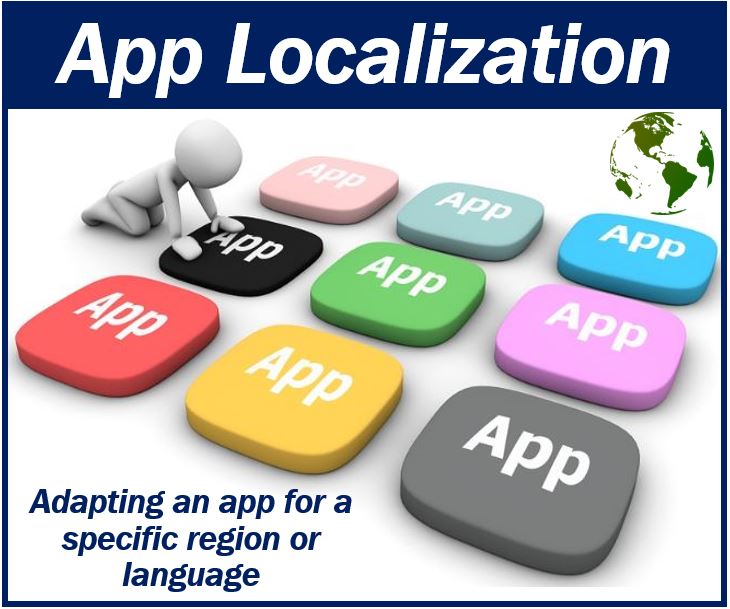An app is an application, such as those that are downloaded by users to a mobile device. It consists of software that has been designed to perform a group of tasks, coordinated functions, or activities that benefit the user. Even though the applications we use on mobile phones are called mobile apps, it is common to simply refer to them as apps.

App localization refers to the process of translating an application into the languages of target users. If you want to target users from several countries, your app needs to be available in different languages.
We also use the term localization with this meaning when talking about any kind of computer software.
The aim of every mobile app developer or seller is to increase the app’s monthly active users or MAU. The more users there are, the more income they earn. If you can customize each app to serve users in different parts of the world, your MAU will rise. However, you won’t be able to do that effectively if you just use one language.
You will need to customize your app so that it works in different languages. For example, people in the United States or United Kingdom will want one in English. However, potential users in Germany, France, or Mexico, will want it to be in German, French, and Spanish, respectively.
App localization – locales
Some apps also have different versions according to locales, i.e., dialects and spoken variations of the same language. For example, Spaniards, Argentinians, and Chileans use slight variations of Spanish.
We typically refer to locales by using four letters; the first two point to the language while the next two tell us which country it is. Look at these four examples below:
- fr_FR (French from France)
- fr_CA (French from Canada)
- en_UK (English from the United Kingdom)
- en_US (English from the United States)
App localization vs. internationalization
Localization
App localization, as mentioned above, refers to having an app in other languages apart from the default language in order to gain more users in different countries.
Internationalization
Internationalization is the process of programming the software so that it can adapt to multiple languages, countries, and regions without any engineering changes. The application can adapt automatically according to where the device is.
In the world of mobile applications, internationalization must occur before localization, because the software code needs to be ready to accept localized content.
Wikipedia says the following about localization and internationalization:
“Localization is the process of adapting internationalized software for a specific region or language by translating text and adding locale-specific components.”
“Localization (which is potentially performed multiple times, for different locales) uses the infrastructure or flexibility provided by internationalization (which is ideally performed only once, or as an integral part of ongoing development).”
Which languages should you choose?
According to ethnologue.com, there are approximately 7,111 spoken languages in the world today. This number is constantly changing, because we are learning about new languages in remote communities all the time.
No app developer or seller would ever consider adapting their app to thousands of languages. So, which ones should we choose?
Twenty-three languages account for over fifty-percent of the world’s population. The ten most widely spoken languages in the world are:
- Mandarin Chinese (1.1 billion speakers)
- English (983 million)
- Hindustani (544 million)
- Spanish (527 million)
- Arabic (422 million)
- Malay (281 million)
- Russian (267 million)
- Bengali (261 million)
- Portuguese (229 million)
- French (229 million)
Even though only 95 million people speak German, they are all from advanced economies. So, you should also include German. Perhaps Russian too, which is spoken by 166 million people.
However, selecting your target markets is not a question of simply choosing how many people speak specific languages. You will need to carry out market research to determine which countries and regions are ideal for your business.
For example, a soccer (UK: football) app would be popular all over the world, but less so in the United States than in Brazil, the UK, Spain, or Germany. A cricket app, on the other hand, would only be interesting for people in the UK, some Caribbean islands, the Indian Subcontinent, Australasia, and some parts of Southern Africa.

